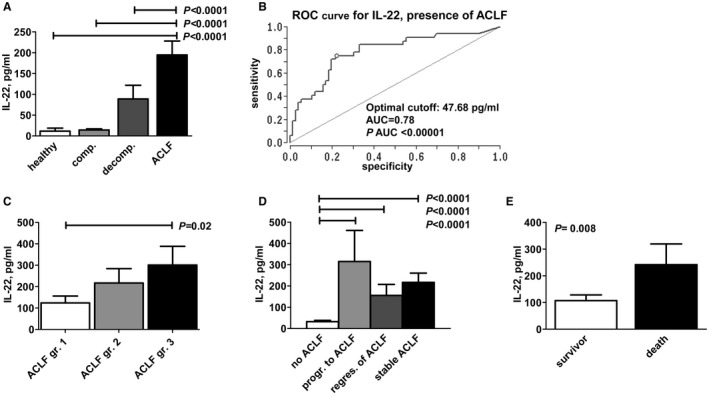Figure 1.

IL‐22 serum concentrations are associated with adverse outcomes of liver cirrhosis. (A) IL‐22 serum concentrations are shown according to the stage of liver cirrhosis. (B) Receiver operating characteristic analysis for IL‐22 serum concentration for the presence of ACLF. An IL‐22 serum concentration of 47.68 pg/mL has been identified as an optimal cutoff to predict ACLF. (C) IL‐22 serum concentration according to the grade of ACLF, as defined by the CLIF‐EASL consortium. (D) Association between serum concentration of IL‐22 and short‐term outcome of patients with liver cirrhosis. IL‐22 concentrations were quantified at baseline and grouped according to the respective outcomes until day 28 of follow‐up as follows: No ACLF: patients without ACLF at baseline and without progression to ACLF until follow‐up; progression (prog.) to ACLF: patients without ACLF at baseline but with progression to ACLF until follow‐up; regression (regr.) of ACLF: patients with ACLF at baseline but with resolution of ACLF until follow‐up; stable ACLF: patients with persistent ACLF from baseline until follow‐up. (E) IL‐22 concentrations were quantified at baseline and compared between patients who died or who survived until day 28 of follow‐up. Abbreviations: AUC, area under the curve; comp., compensated; decomp., decompensated; gr., grade; and ROC, receiver operating characteristic.
